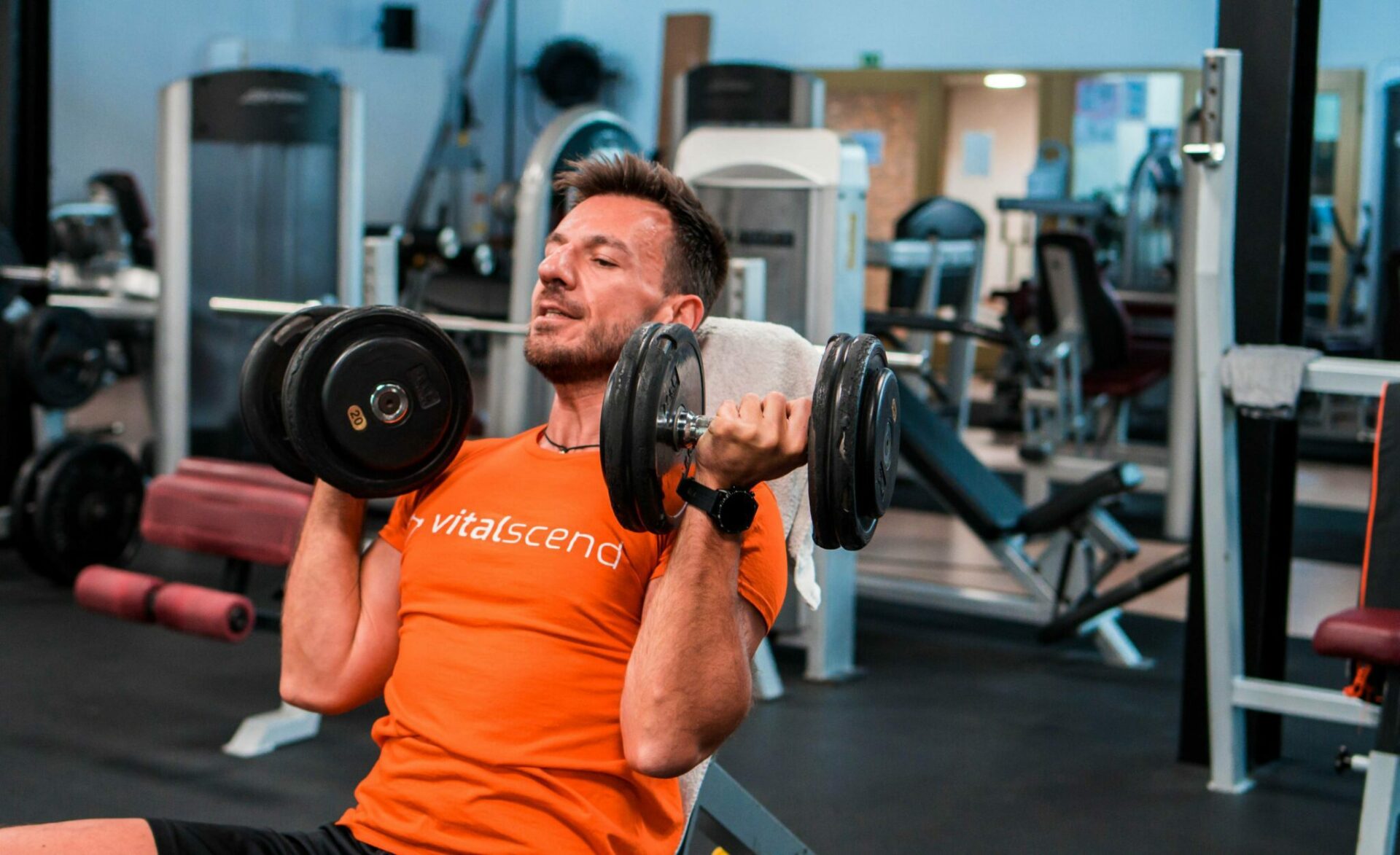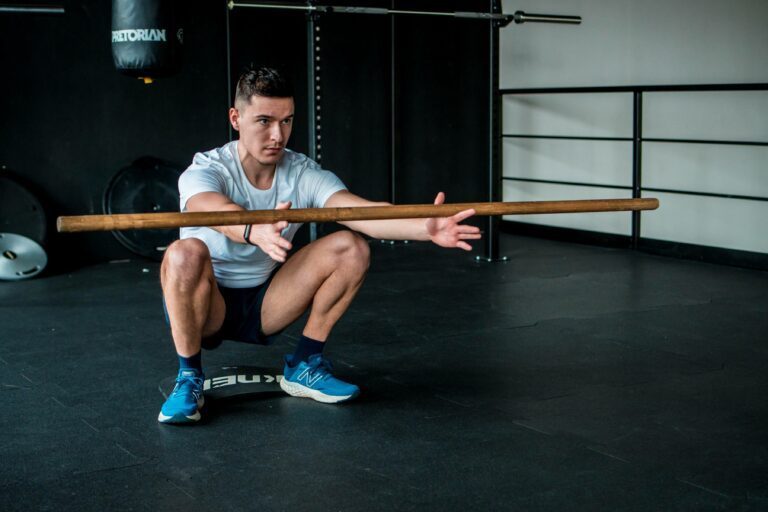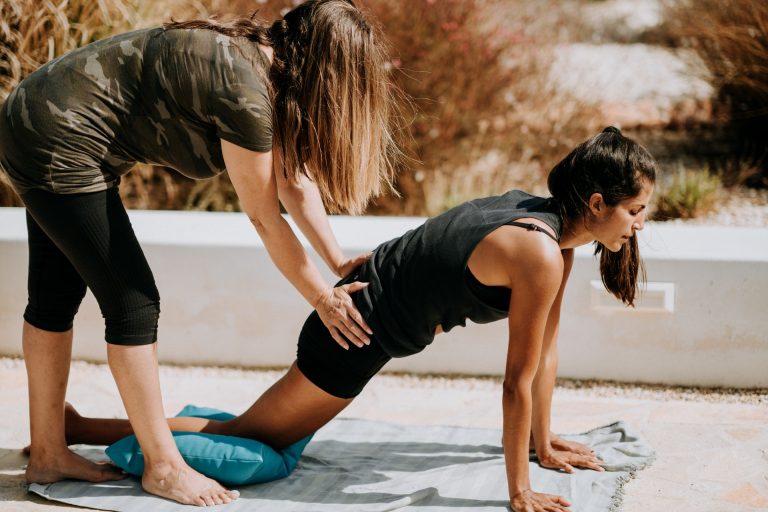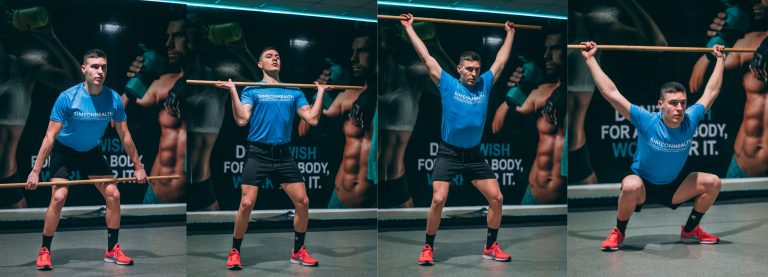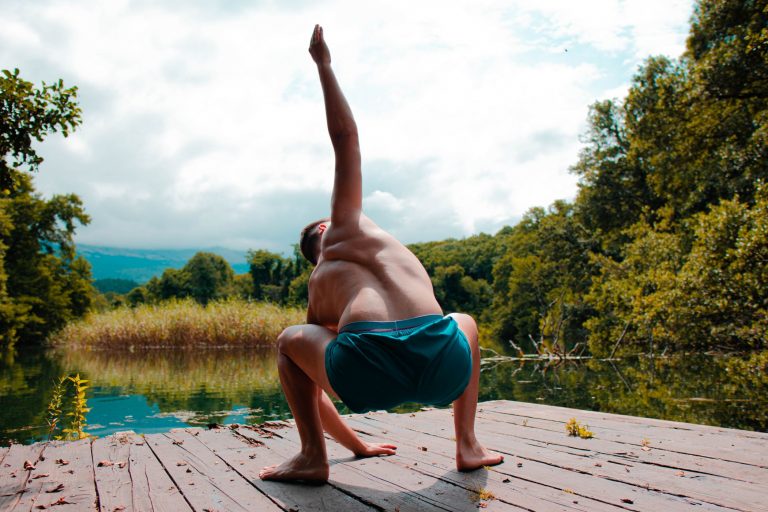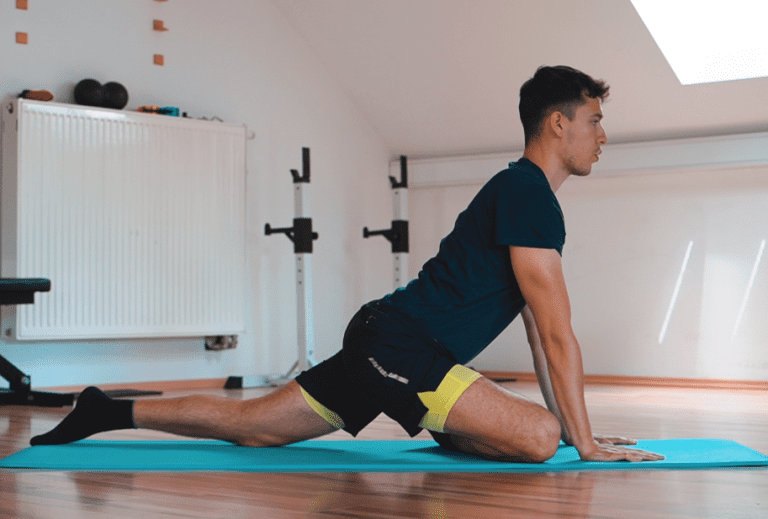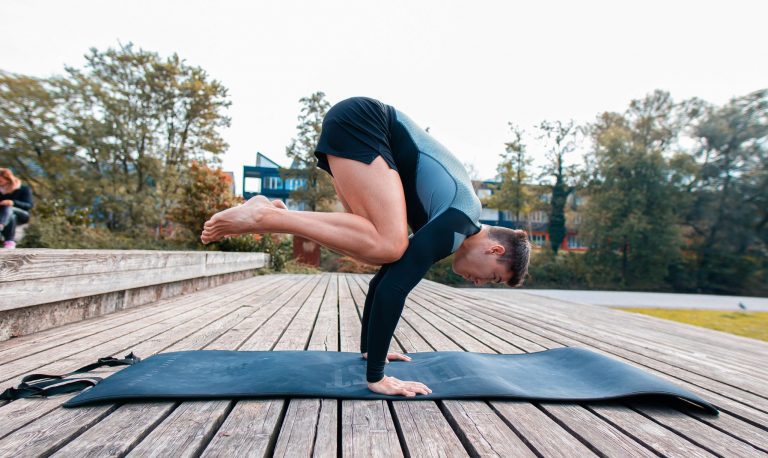11 Shoulder Mobility Exercises To Unlock Your Shoulders
Having optimal shoulder mobility translates into being more functional. You can lift overhead, scratch your back, open a heavy door, etc. Potentially, it translates to fewer injuries, less pain, and better posture.
But even if you’re not interested in the benefits shoulder mobility offers for posture, sleep, and focus, there is another secret ingredient. Training to unlock your shoulder means better athletic performance, more strength, and muscle mass.
We’ve just listed our top 11 shoulder mobility exercises. The key here is to combine stability, mobility, flexibility, and strength. It’s a unique combination made in a perfect sequence – quite effective to unlock your shoulders.
Quick Shoulder Anatomy
The shoulder joint is quite a complex, large joint interlinking numerous tissues together. Each rotation, flexion, or extension of the shoulder moves so many little muscles that connect to your scapulae and rib cage.
First, on the bony part, we have 4 main bones. Humerus, the largest bone in your arms, the scapulae, known as your shoulder blade over which is the clavicula, the sexy-looking bone, and the rib cage with its ribs and sternum.
The glenohumeral joint is a ball-and-socket joint providing articulation between the humerus and scapulae. It offers a dynamic, wide range of motion type of movement in your shoulders. The AC joint connects the clavicle with the scapula, gliding when in motion, while the SCJ joint connects the sternum with the clavicle.
We have a ton of muscles supporting shoulder movement, but the short of it is:
- anterior muscles such as the pectoralis (push), subscapularis (stabilize), and serratus anterior (protraction)
- superficial posterior muscles such as the trapezius and latissimus dorsi (wide, lateral)
- deeper posterior muscles like the levator scapulae (lifting the shoulder) and rhomboid (retracts the scapulae) important for posture
- intrinsic muscles like the deltoid (flexion, abduction, extension) and the teres major
- rotator cuff muscles like the infraspinatus, supraspinatus, teres minor, and subscapularis which help us stabilize and rotate the shoulder externally and internally.
Fun Fact
The shoulder joint is the most complex joint with a high degree of freedom. Each shoulder movement makes joints glide, muscles tense or stretch, fluids move, and tendons support – all so we can stabilize the shoulder.
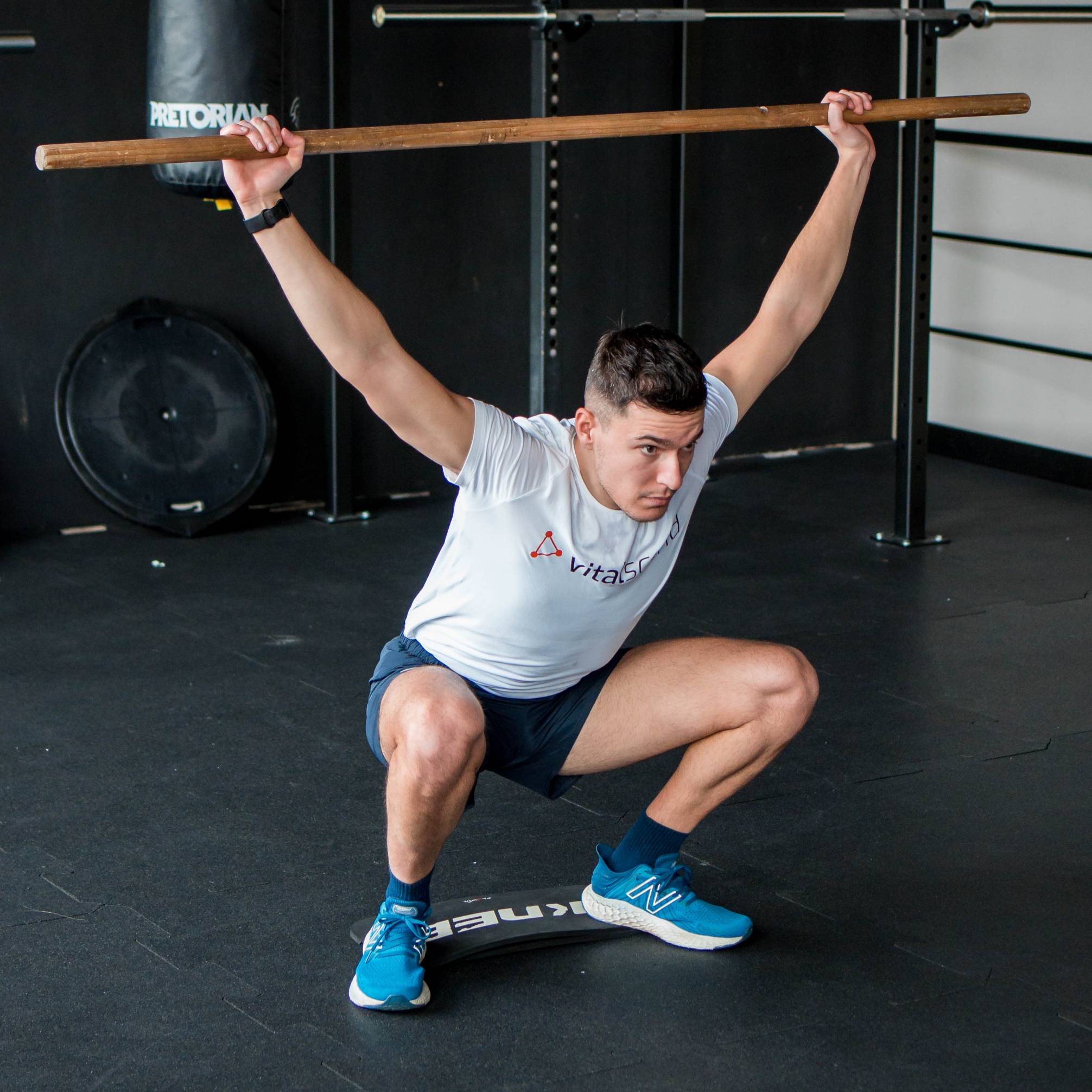
Why is Shoulder Mobility Important?
The shoulder has complex functions which allow you to open a door, scratch your back, or pass the ball. You’d be surprised how much functionality one with poor mobility gains from the shoulders. Why? It’s a multiplanar joint – meaning it moves in multiple planes with a high degree of freedom, you can do so many things. Here’s an example:
- Flexion – raising your arms overhead allows you to lift an object to a higher shelf or to climb rocks
- Extension – reaching back allows you to scratch your back, open a door, or reach for an object on the back seat
- Abduction – laterally raising your arm helps to reach objects overhead and complete overhead tasks
- Adduction – arm crosses the front of the body, helps you do rotations like chopping wood or swinging a baseball
- Horizontal abduction or adduction (with 90 degrees flexed elbow) – helps you to do a rowing motion, shower yourself, or throw a frisbee
- External rotation – turning arms outward to reach and transfer an object on the side, swing a baseball or throw a backhand in tennis
- Internal Rotation – turning your arms inward which helps you hug your partner, serve a tennis ball, or bring your beer closer
Note
As we age, shoulder mobility typically decreases. Large analyses of over 2-6 thousand people show significant decreases in shoulder flexion, external rotation, and active abduction with age. (1) (2) To potentially prevent this, we need to move, extend our arms overhead, stabilize the shoulders and use our arms more.
The Benefits of Shoulder Mobility
From improving athletic performance, joint health, and longevity to a better posture and less pain, shoulder mobility training provides numerous benefits. Most of this can consequentially affect other areas you might never even think of such as focus, sleep quality, and energy levels.
- Improves posture – flexibility lets you open up the chest, pull your shoulders down while improved back strength keeps your spine straight
- Increases muscle mass – lifting weights through higher ranges of motion leads to an increase in hypertrophy or muscle growth (3)
- Makes you more functional – being able to scratch you back, throw a baseball, open a heavy door, and lift your kids comes in handy
- Increases range of motion – by maintaining or increasing ROM we prevent locomotion limitations and muscle shortening that occurs with age (4)
- Increases strength – more mobility means more efficient way of lifting the load and using our muscles as we can maintain a straight line of the bar
- Aids in preventing pain and injuries – optimal mobility positions the shoulder in a better way, preventing tightness, pain or kyphosis. It also allows for proper form when lifting, or throwing and rowing so fewer injuries can occur
- Improves shoulder stabilization – mobility enhances the way you use your muscles. External rotators and scapulae stabilizers are commonly trained in such protocols, leading to more stable shoulders and fewer injuries. (5)
- Supports health and well-being – all prior effects consequentially lead to better sleep, improved cognitive function and focus, increased energy, fluidity, and painless movement.
Conclusion
Shoulder mobility offers a myriad of benefits on both the side of movement, health, and well-being. It improves functionality, strength gain, and muscle growth and helps us lift with a correct posture. It prevents pain and injuries, by reducing the pressure and improving proprioception. Improves posture which leads to better sleep, cognition, and more energy.
What are the best shoulder mobility exercises?
Some of the top shoulder mobility exercises include prone arm circles, lifting a stick overhead, circling overhead and back with a band, and unilateral cable rows in the full ROM.
Should I stretch before or after exercise?
If you’re thinking about strength training or intense exercise like running sprints, stretching is not advised, aside from a few short stretches in your warm-up. Passive, long stretches for flexibility are best done when warm, in a separate session like yoga.
Three Components of Shoulder Mobility Training
Flexibility
Strength
Mobility
Flexibility is a key component, as many tight muscles around the shoulders limit our motion. Flexibility is about improving how elastic a muscle is. It combats the effects of sitting and loosens up key muscles that allow us to extend hands overhead, sit upright, and open the chest
Strength is about improving the force exertion or tensile properties of the muscle. By strength, we really mean a combination of balance, coordination, and stability. Shoulder stabilization helps us control movement and improve coordination, thus preventing injuries. Also, strengthening key back muscles helps us extend back and straighten the spine, which leads to better shoulder mobility as well.
Mobility is our end goal, which combines the best of both worlds. Think of doing the bench press, you need flexibility to lower the weight, but you need stable shoulders to maintain and strong ones to push through.
Note
Flexibility is improved through stretching, both passive and active. Strength is improved through resistance training. Mobility is about finding both elements and dynamically connecting them. An example is during a reverse thoracic bridge you stretch the chest but must activate the shoulder for stability.
Disclaimer: It is essential to consult with a qualified healthcare professional before beginning any exercise program and to stop immediately if you experience any pain, discomfort, or other adverse effects. The information provided is not a substitute for medical advice, diagnosis, or treatment, and should not be relied upon as such.
Shoulder Mobility Exercises
The protocol is made up of 11 exercises, including stretching, strengthening, and mobilizing exercises. We aim to stretch the tight muscles, strengthen the weaker muscles while adding joint mobility and working the fascia.
1. Overhead Raises w/ Stick
The overhead raise works on thoracic mobility and shoulder extension. Besides stretching out tight lats and posterior deltoid, it works the little tissues in the spine to allow for a full vertical extension overhead. That translates to a better overhead press posture leading to less pressure on the joint and higher strength.
- standing straight, grab a stick, grip it shoulder width, thumbs face up
- on your inhale slowly raise your arms to a comfortable level
- once you reach an endpoint, raise you shoulders and try to extend a bit more
- focus on the stretch, allow your arms to extend back, and feel the sensation
- no forcing or pushing back, it’s all slow (controlled) without arching your back
- hold for 3 seconds, then on your exhale lower the stick down
- repeat for 2 sets of 10-12 reps
2. Scapular Wall Slides (Angels)
The scapular wall slides, so-called angels are great for mobilizing your spine. The main effect takes place in the numerous tight muscles and tendons in the thoracic region. By doing so, we don’t just open the thoracic spine but also strengthen back retractors that support our posture.
- rest your back against a wall, bend your knees slightly and tilt your pelvis back
- arms extend overhead with the back of your shoulders, elbows, and wrists touching the wall
- slowly slide down your arms by flexing your elbows down until a 90-degree level
- hold for 2 seconds and squeeze the shoulder blades together
- extend the arms up slowly, as far as the 3 points of your arm touch the wall
- dynamically transition between the two without arching your back
- Do 2 sets of 12 repetitions
3. Overhead and Back w/ Band
The overhead and back rotations are usually done with a stick, but for security reasons, we add a band you can lengthen. The idea is to stretch the chest and front delts while mobilizing the shoulder joint during the dynamic sequence. It warms up and lubricates the shoulder while opening the chest region.
No forcing or pushing back if our shoulders don’t allow it, or injury could occur. The key here is proprioception. To eliminate any popping we do it mindfully, slowly rotating backward, focusing on activating the key muscles. The wider the grip the easier it is. To progress, we grip narrower, but never to an uncomfortable level, but to a range of motion we can do in full control.
- grip an elastic band far apart – twice the width of your shoulders, thumbs face up (the wider the grip, the easier it will be)
- stand straight, chin tucked down, SLOWLY raise your arms overhead
- once at vertical, stretch out the band, raise your shoulders, and rotate internally
- finish the movement by extending your arms back (overhead) only if comfortable
- by focusing on the movement and slowing down we aim to reduce any popping that can occur
- once down, depress (lower) your scapulae, and repeat again by lifting the band SLOWLY
- at vertical (when coming back) externally rotate the shoulders to finish the move
- Do 2 sets of 10 repetitions up and back
4. Horizontal Row (Normal and T)
The horizontal row is the basic exercise for strengthening the posterior muscles on the back. This includes rear delts, mid trapezius, rhomboids, lats, and biceps – all of heavy importance for keeping a straight back beside the latter.
Usually, people have weaker scapular retractors, leading to a hunched-over, kyphotic curve. This is the key exercise added for posture and strength. It works the scapular retractors and back erectors. Alternatives include unilateral band rowing, barbell bent-over row, or the regular seated cable row.
- place an elastic band around an object, stand on the opposite side, grip the band
- slight bend in the knees, before start we straighten out the back, retract our shoulders
- short inhale, tighten your core and pull the band while the elbows travel back alongside the torso
- once you reach a full row, stop and squeeze for 1 second, feel the back muscles
- then exhale releasing the band by extending your elbows forward
- don’t let your shoulders travel forward (protract) but stay active in the back
- Repeat for 2 sets of 12 repetitions
5. Band Pull Apart (external rotation)
The band pull-apart works the external rotators like the infraspinatus, supraspinatus, and teres minor muscles. This is the ultimate shoulder prevention exercise added in many prehab and rehab clinics. The reason is, this heavily impacts our shoulder stabilization, prevents potential injuries, and aids in recovery.
- standing, position your arms on the side of your torso, flex your elbows at 90 degrees
- grip an elastic band at shoulder-width, thumbs look outward (take a very light band at first)
- rotate the hands externally to 45 degrees, while your elbows stay on the torso
- once rotated, additionally squeeze the shoulder blades together
- slowly get back to the starting position, and repeat again without arching the back
- do 3 sets of 15 reps
6. Reverse Plank Bridge Reach(Uni or Bi)
The reverse plank bridge can be done unilaterally which is a bit harder or with both hands. The latter stretches the chest even more, but the first one adds an additional layer of shoulder stabilization. The focus is to really push hard away from the ground, squeeze the shoulder blades, and reach further. Reaching over and bending the torso loosens up the latissimus dorsi and side oblique muscles enhancing thoracic mobility as well.
- get seated, position your right hand back on the floor, shoulder above the wrist
- feet on the floor, knees flexed at 90 degrees, look back, short inhale
- slowly activate your glutes to lift the hips and push through the shoulders to extend back on your exhale
- extend your left arm overhead and back to reach further, and feel the chest and lats stretch
- push through the shoulder to stabilize for 2 sec.
- slowly get back until your butt touches the ground, and repeat
- Do 2 sets of 6 repetitions
7. Prone Arm Circles (+Raises)
Definitely my favorite, and most challenging one. The prone arm circles can really test your shoulder mobility and strength. It’s about traveling with your arms back and forward in a circular motion, passing a tennis ball. It takes the shoulder in a full range of motion as it manages to combine both rotation and ab(d)uction. Plus, it strengthens back erectors, deep neck flexors, and stretches front delts – all great for posture.
- lie down on your stomach, posteriorly tilt your pelvis (squeeze), tuck your chin, grab a tennis ball
- lift and extend your hands overhead, thumbs face each other, palms face the ground
- slowly move your arms to horizontal while rotating your shoulder internally
- reach with your arms back, so in the rear position the palms face the ceiling, pass the ball to the other hand
- slowly move the hands back to overhead extension, thumbs look up, pass the ball again
- focus on activating the muscles to make the movement smoother and slower
- Repeat 2 sets of 8-10 repetitions
8. High Doorway Stretch
The doorway stretch allows you to open up the chest and loosen these muscles usually tight in people with kyphosis. By reaching higher, we aim to target the tightest muscle limiting shoulder ROM – pectoralis minor. The goal is to improve flexibility, so we can open up the chest and extend back.
- raise your right arm to the side slightly higher than horizontal, flexed in the elbow at 100-120 degrees
- position the inner part of the elbow (forearm) on a door frame or a stable object
- step forward with the right leg and slowly push forward, letting your chest open up
- rotate the torso outward until you feel a light stretch
- breathe deep and hold the stretch for 30 seconds, and fall deeper for another 10 sec.
- repeat for 2 sets on each side, 40-second holds.
9. Trapezius Stretch
The best overall for office workers. The trapezius is quite tight in most sedentary people typing on a computer. It elevates the shoulders and keeps you tight and hunched forward. This makes us tense, deteriorates our focus and productivity, plus makes us nervous.
We aim to loosen up the traps so we can relax our shoulders down. This consequentially positions the scapulae in a better way and reduces stiffness and tension, potentially improving sleep. But if this isn’t enough (which for most people isn’t) look for a massage ball to perform a few rolls on the wall.
- grip your head back with the right arm, rotate it 45 degrees to the side (diagonally)
- bend the left elbow to wrap the arm behind your back, relax the left shoulder
- slowly pull your head down with the chin pointing toward the chest until you feel a light stretch
- Hold for 30 seconds, breathe deep, feel the stretch and enter a deeper one for 10 sec.
- repeat for 2 sets on each side, 40-second holds.
10. Side Bend Latissimus Stretch
For anyone with tight lats, this feels so good. The latissimus is a huge V-shaped muscle that helps you extend and adduct your arm. It’s tight in those that drive, swim, row too much, or push quite hard on a back-day in the gym.
It’s the ultimate connector of your arms, shoulders, and spine. This is why it’s so important to release tightness, as it contributes to numerous movement patterns. If you really want to release tight lats, foam rolling or massage ball pressure does the trick – but release the rear deltoid first and thank me later.
- stand next to a fixed object on your left side
- raise your right arm overhead and bend your torso to the left, reach to grip the object
- you can step away a bit (mimicking reaching further) and increase the lateral bend in your torso
- finally, rotate your right shoulder forward trying to increase spine curvature and scapulae-to-hand distance
- imagine you’re hanging on the right hand, so shift your weight further away from the object
- breathe deep, feel a light stretch for 30 sec. try to relax even deeper for an additional 10 sec.
- Do 2 sets of 40-second holds on each side
11. Thoracic Extension
This one is the ultimate thoracic mobility exercise, which translates to better shoulder mobility. Why? Because they’re connected, it lets you extend your arms overhead without arching your back. Just as with cat-cow or overhead raises, it works most of the deep muscles connecting the vertebrae. It loosens up the semispinalis and multifidus muscles which leads to better thoracic mobility.
- kneeling down, position your elbows on a bench in front of you, shoulder-width, flexed elbows
- slowly push your chest lower, so you open up the thoracic spine
- you want to extend the thoracic spine down and open up the shoulders back
- once at the end point, hold for 3 seconds, feel the mobilization and slowly get back
- no pushing, no forcing, no sharp pain or sensations should occur
- Do 2 sets of 8 reps, dynamically shifting from neutral to thoracic extension
Conclusion
Mobile shoulders are vital for physical health. It allows us to swing a baseball, lift heavy objects overhead, reach back for the keys and hit a forehand in tennis. In other words, it makes us more functional.
Flexibility, Strength (Balance), and Mobility are the three key components of mobile shoulders. It’s about stretching the tight muscles, strengthening the back retractors, stabilizing the shoulders, and mobilizing the thoracic spine.
The benefits of increasing the functional range of motion in the shoulders are improved posture, less pain, and fewer injuries, higher strength and muscle mass. This leads to better focus, less muscle stiffness, quality sleep, and more energy.
Our best shoulder mobility exercises list includes: Overhead Raises w/ Stick, Scapular Wall Angels, Overhead and Back w/ Band, Horizontal Row, Band Pull Apart, Reverse Plank Bridge, Prone Arm Circles, High Doorway Stretch, Trapezius Stretch, Side Bend Latissimus Stretch, and Thoracic Extension

